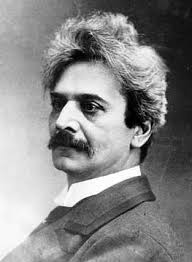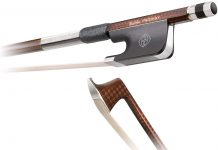If you play the cello and you want to improve your technique, Popper is here to save you.
The High School of Cello Playing Op. 73 will become your cello bible and is used by all great cellists and teachers around the world. The go-to etudes will help you solve many types of technical difficulties.
Who is Popper?

He was also known for his compositions for the cello. He composed 4 concertos, a Requiem for three cellos and orchestra, and other smaller pieces.
Popper was one of the last great cellists to play without the endpin, although a drawing of him playing in a string quartet suggests that later on, he adopted it.
He composed the 40 Etudes during his time teaching at the conservatory, to help his students overcome technical difficulties.
More About the Etudes
It’s not uncommon to find cellists who struggle with difficult passages in different pieces, and no matter how much the study that passage, they can’t seem to improve. This leads to frustration and can be harmful to the cellist.
Popper’s High School for the Cello is designed to solve technical problems through melodic and fun-to-play exercises.
To study Popper means that you will be able to master the fingerboard inside and out. The exercises are created to be able to come in and out of positions with ease and grace.
Many students dread, fear and avoid Popper. I completely understand they are difficult and challenging. Popper’s work is definitely not intended to be mastered during the first reading. You have to dig into it and create a study plan. In fact, once you start studying Popper you realize you have been studying wrong all this time.
The exercises are meant to work on your left hand as much as on your right. While the technical difficulties seem more with the left hand, the bowing on the right hand is just has hard.
According to professor Richard Slavich from the University of Denver Lamont School of Music, the exercises in order of difficulty are:
Relatively easy: 1, 3, 6, 11, 16, 19, 27, 36
Moderately demanding: 2, 5, 8, 10, 15, 17, 18, 21, 22, 23, 25, 26, 30, 31, 34, 35
Difficult: 4, 7, 9, 12, 14, 20, 24, 27, 28, 32, 37, 39, 40
Very Difficult:13, 29, 33, 38
Slavich also suggests exercises when preparing for the following pieces:
Bach Suite No. 3, Gigue – 36
Boccherini Concerto, Mvt 3 – 19
Dvorak Concerto, Mvt. 1 – 20,23
Haydn D Major Concerto – 33
Janacek Fairy Tale – 30
Rimsky-Korsakov Flight of the Bumblebee – 27
St. Saens concerto # 2, Cadenza – 5
Schumann Concerto, Mvt. 2 – 34
Shostakovich Concerto #1, Mvt. 1 – 9.
According to Mihai Tetel, Associate Professor of Cello at the Hartt School of Music, these are the exercises to practice to prepare for the following repertoire:
Haydn D Major Concerto – 18, 38
Bach Suite No. 4, Prelude – 11
Locatelli Sonata, Mvt. 1 and 3 – 14
Popper Gavotte – 14
Tchaikovsky Rococo Variations, 1st and 2nd variations – 14
Schubert Arpeggione Sonata, Mvt. 1 – 14
Dvorak Concerto – 9, 13, 17
Ligeti Cello Sonata, Mvt. 1 – 9, 13, 17
Elgar Concerto, Mvt. 2 – 27
Popper Hungarian Rhapsody – 27
Tchaikovsky Rococo Variations, 7th variation – 27
Beethoven Sonata No. 4, Mvt. 2 – 6
Beethoven Sonata No. 5, Mvt. 1 – 6
Lalo Concerto, Mvt. 1 – 26
Bach Suite No. 6, Sarabande – 34
Hindemith Sonata for Solo Cello, Mvt. 4 – 1
If you’re curious about how these exercises sound, the cellist and composer Joshua Roman developed the Popper Project. He set up to record all 40 exercises no matter where he was and post them on YouTube. All he needed was his cello and his laptop! In his blog, he talks about the project and the process to record all 40 exercises.
The Popper High School of the Violoncello is without a doubt one of the best (if not the best) way to solidify your technique. Just remember to take them with ease and create a process and a plan around them. This will also help you develop a better practice routine!
Developing a better practice session is something that will help you improve and solidify your technique. working through difficulties is always the best way to get better at your instrument, so don’t hesitate to take on these challenging tasks and embrace Popper!







